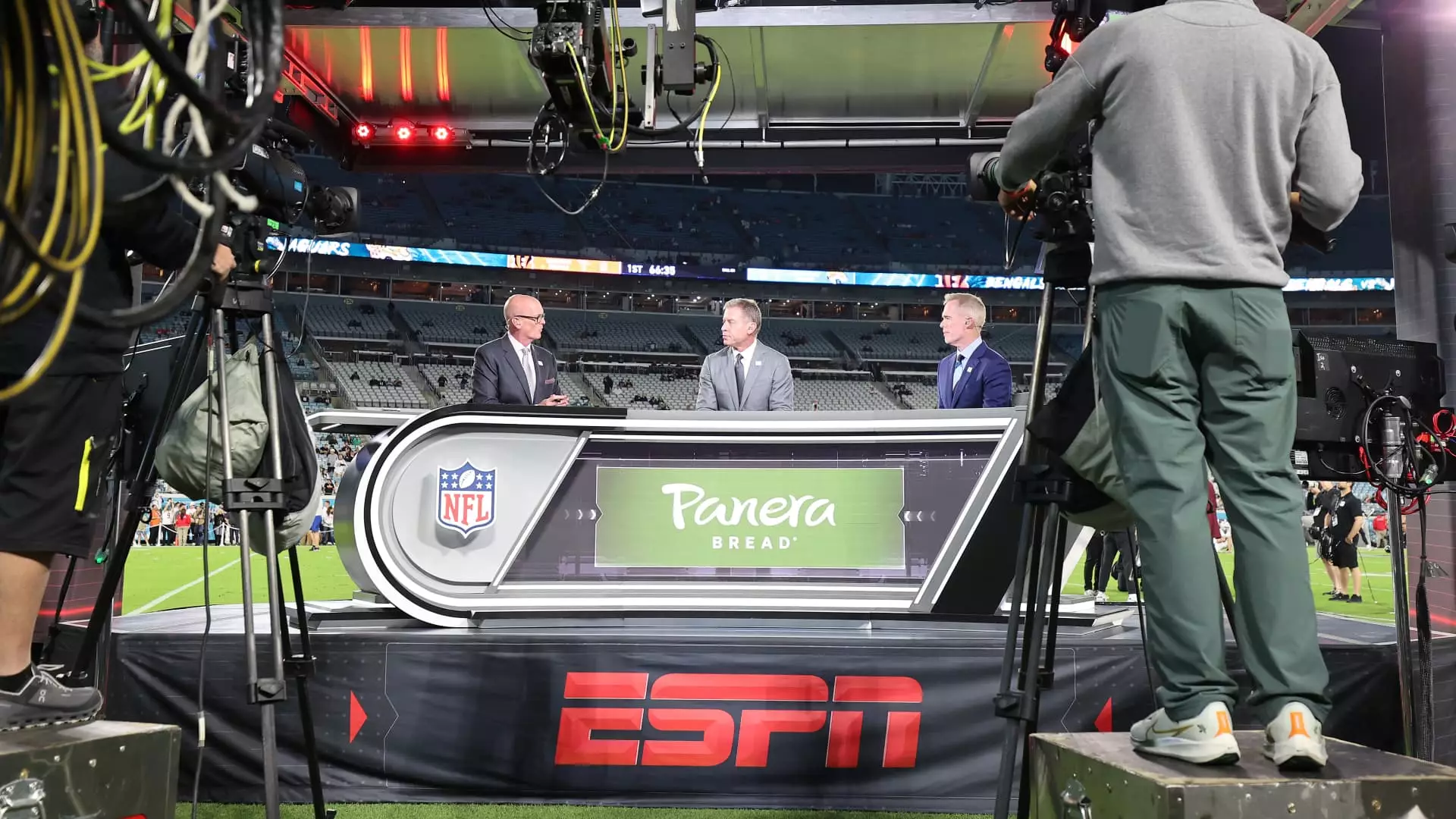The ongoing dispute between DirecTV and Disney surrounding broadcasting rights has escalated tensions to a boiling point, particularly with the NFL’s much-anticipated “Monday Night Football” game imminent. With millions of DirecTV subscribers potentially missing out due to the standoff, a closer examination of the implications of such carriage disputes in the broadcasting landscape reveals significant repercussions for consumers, providers, and the future of traditional pay-TV.
The conflict began in earnest when Disney’s networks, which include vital channels like ESPN, FX, and ABC, were taken offline for DirecTV customers effective September 1. This blackout resulted from a failure to negotiate a deal regarding carriage fees and content bundling practices. Both companies have differing views on how programming should be offered; DirecTV advocates for genre-specific bundles—allowing consumers to tailor their TV offerings based on personal preferences—while Disney is resisting this approach, opting instead for traditional packages.
As the clock ticks down to the NFL game, the likelihood of reaching a consensus appears slim. Talks could potentially conclude positively before the event; however, sources hint at the possibility of extended negotiations. The stakes are high, especially since live sports routinely draw significant viewership, which in turn is central to media rights negotiations. ESPN, due to its lucrative programming, is said to receive some of the highest payments among cable networks—an arrangement DirecTV is pushing back against.
The fallout from the dispute has already been felt by consumers, who missed major events like the U.S. Open and the initial weekend of college football games. As subscribers increasingly turn to streaming services for content, live sports remain a critical component that keeps many tethered to traditional cable packages. DirecTV’s recent losses, amounting to over 4 million subscribers this year alone, illustrate a broader shift within the industry. The demand for flexibility in bundling options is growing among a generation of viewers accustomed to directly picking and choosing their entertainment options.
DirecTV’s chief content officer, Rob Thun, has articulated how Disney’s approach is seen as anti-consumer, arguing that it disregards customer needs and promotes rigidity in an industry that is increasingly adapting to digital flexibility. It’s essential to address whether this confrontation is merely a symptom of larger structural issues within the media landscape, where costs have spiraled, and where previous models of operation are struggling to maintain viability.
The dispute has not only played out in a commercial context but has also extended to legal arenas. DirecTV has filed a complaint with the Federal Communications Commission (FCC), alleging that Disney is not negotiating in good faith. This legal angle underscores growing frustrations with the traditional media landscape and raises questions about the regulatory frameworks that govern such disputes. The existence of a pending lawsuit against the joint venture Venu, which involves Disney, Fox, and Warner Bros. Discovery, also hints at deeper tensions within the industry.
Disney has countered by maintaining that it is looking for equitable negotiations, insisting that it must value their extensive portfolio appropriately. The combination of legal intricacies and public relations tactics, therefore, adds another layer of complexity to the already turbulent waters of sports broadcasting.
The battlefield over televised sports is becoming increasingly strategic, with both companies recognizing the evolving needs of an audience that yearns for innovation in how content is offered and priced. ESPN chairman Jimmy Pitaro noted that while blackouts are damaging, achieving a quick resolution depends on creative, cooperative negotiations, similar to past instances where both parties managed to find common ground under time-pressured conditions.
As we observe these developments, the broader implications for the industry are becoming evident. With traditional pay-TV models under duress from consumers seeking alternatives, the pathway forward may necessitate significant adaptations. Companies like DirecTV must innovate and provide more flexibility if they wish to retain subscribers amidst escalating competition from streaming platforms.
The fallout from the DirecTV and Disney quarrel serves as a microcosm of a larger narrative within the television landscape—one that grapples with the coexistence of legacy models and the budding demands of a contemporary audience. The actions of both companies in the coming weeks could pave the way for how sports programming is delivered in the future.

